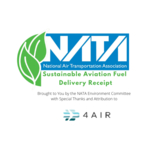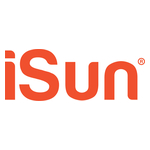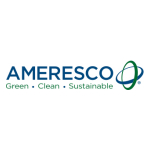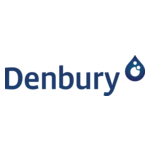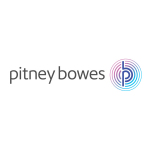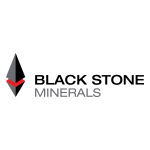DENVERDENVER--(BUSINESS WIRE)--Liberty Energy Inc., formerly known as Liberty Oilfield Services Inc., (NYSE: LBRT; “Liberty” or the “Company”) announced today second quarter 2022 financial and operational results.
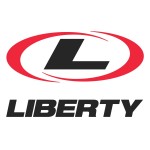
Summary Results and Highlights
-
Revenue of $943 million, increased 19% sequentially and 62% year-over-year
-
Net income1 was $105 million, or $0.55 fully diluted earnings per share
-
Adjusted EBITDA2 of $196 million
-
Reinstated return of capital program with share repurchase authorization of up to $250 million
-
Growing strategic partnerships with key customers to maximize our long-term returns:
-
Multi-year agreements to deploy two additional Liberty digiFrac™ electric fleets in early 2023
-
Announced 2022 fleet reactivations at compelling economics to support core customers’ development plans, while growing Liberty’s 2023 free cash flow generation
-
Released 2022 Bettering Human Lives report, placing today’s global energy security crisis in proper context and showcasing Liberty’s leadership in clean energy technology innovation
-
Announced investment in Fervo Energy, leveraging Liberty’s technologies and equipment to help enable next-generation low-carbon, reliable electricity from unconventional geothermal resources
“The second quarter was a busy and exciting time as the Liberty team continued to deliver differential quality services in today’s robust but operationally challenged environment. This translated into a notable milestone of fleet financial performance at levels that were last seen in 2018. The hard work and dedication of our employees combined with deep relationships with our partners across the value chain enabled us to achieve strong operational efficiency in an environment still impacted by supply chain challenges,” commented Chris Wright, Chief Executive Officer.
“Liberty’s first half of 2022 is starting to reveal the value creation from our 2021 acquisitions and insistence upon getting the business integrations done right, consistent with our focus on long-term results. We’ve positioned the company to deliver top-tier performance through cycles with a focus on free cash flow generation and maximizing returns. We’re driving cash flow expansion that allows us to fund compelling organic investments to grow our competitive advantage, while also returning cash to shareholders. Our 2022 capital expenditures will now include investment in two additional digiFrac fleets supported by attractive dedicated customer agreements, accelerating wet sand handling technology, and the reactivation of fleets with long-term customers, all of which will drive incremental future cash flow generation,” continued Mr. Wright. “Our strong financial results and a constructive outlook support the reinstatement of our return of capital program, beginning with a board-approved $250 million share buyback program. Our guiding principle is to maximize the value of a Liberty share. We believe the flexibility afforded by a share repurchase program gives us the ability to opportunistically act on a dislocated stock price, calibrated by market and business conditions.”
Outlook
While the global economic recovery outlook has softened on reverberating impacts from higher inflation, rising interest rates and the Russian invasion of Ukraine, oil and gas markets remain constructive. Eight years of underinvestment in upstream oil and gas production, exacerbated by inept global policy initiatives aimed at incentivizing an energy transition, has created a mismatch of supply and demand. Today, historically low global oil and gas inventories, limited OPEC spare production capacity and a dearth of refining capacity are colliding with increased energy demand. Oil and natural gas demand growth is coming from the post-pandemic recovery in travel, China’s emergence from its enforced Covid lockdowns, plus seasonal demand. These are all further magnified by the Russia/Ukraine conflict and the potential for sanctions imposed on Russian oil exports, coupled with Russia’s decision to constrain natural gas pipeline exports to Europe.
The greatest risk to our marketplace is a severe recession that leads to a drop in global demand for oil and natural gas. A moderate recession typically leads only to a slowing in the rate of demand growth for oil and natural gas, which would likely not be overly disruptive to our customers’ activity given today’s low inventory levels and tight supply and demand balances. The recovery in oil supply appears to be under greater threat than oil demand.
North America is positioned to be the largest provider of incremental oil and gas supply. Today, E&P operators are evaluating the opportunity to deploy incremental capital in North America to modestly grow production while remaining focused on shareholder priorities. The fundamental demand call on North American oil and gas supply is strong. Supply is restricted by a tight frac market, where equipment, supply chain and labor constraints limit frac fleet availability and service quality available to our customers. Many frac companies are struggling to execute in today’s environment. Moreover, operators desire ESG-friendly frac fleet technologies that provide the opportunity for both significant emissions reductions and large fuel savings. Liberty is uniquely positioned with the technology, scale, and vertical integration to meet demand for service quality and best-in-class technology.
The frac market is near full utilization, and few service providers have the fleet capacity and supply chain reach to satisfy E&P operators’ goals. Liberty was disciplined in restraining fleet reactivations in the post-Covid era of muted returns. Pricing has now recovered to where Liberty, in support of our customers’ long-term development needs, is reactivating several of our recently acquired, available fleets. Importantly, these long-term, dedicated customers seek additional next generation fleets that are not available today in the market, and Liberty is providing an avenue to serve those customers and simultaneously driving free cash flow from these existing fleets to reinvest in our fleet modernization program. Liberty is also partnering with key customers on the deployment of two additional digiFrac electric fleets in 2023. Demand is very strong for the technically superior design Liberty developed throughout the downturn that drives better safety and efficiency, a rare commodity in a tight market.
“A strong frac market and specific conversations with our customers gives us confidence in the demand for Liberty services into the coming year,” commented Mr. Wright. “In the third quarter, we expect approximately 10% sequential revenue growth, primarily driven by fleet reactivations and modest net pricing increases. Third quarter margins are expected to improve from the contribution of incremental fleets and modest price improvements, partially offset by ongoing supply chain, operational and inflationary pressures.”
“The increased free cash flow generation capability of our expanded business underscores the benefit of our countercyclical investment philosophy, highlighted by the contributions gained from the OneStim acquisition. Our strategy remains unchanged since our company was founded: delivering superior returns and generating free cash flow, by balancing disciplined investment with maintaining a strong balance sheet and returning capital to shareholders,” continued Mr. Wright.
Share Repurchase Program
Liberty’s Board of Directors authorized a share repurchase program that allows the company to repurchase up to $250 million of outstanding common stock beginning immediately and continuing through and including July 31, 2024. This represents approximately 10% of Liberty’s market capitalization based on the current share price. The open market share repurchase program is expected to commence during the third quarter of 2022.
The shares may be repurchased from time to time in open market transactions, through block trades, in privately negotiated transactions, through derivative transactions or by other means in accordance with federal securities laws. The timing, as well as the number and value of shares repurchased under the program, will be determined by the Company at its discretion and will depend on a variety of factors, including management’s assessment of the intrinsic value of the Company’s common stock, the market price of the Company’s common stock, general market and economic conditions, available liquidity, compliance with the Company’s debt and other agreements, applicable legal requirements, and other considerations. The exact number of shares to be repurchased by the Company is not guaranteed, and the program may be suspended, modified, or discontinued at any time without prior notice. The Company expects to fund the repurchases by using cash on hand, borrowings under its revolving credit facility and expected free cash flow to be generated over the next two years.
Fervo Energy Investment
Liberty announced today a $10 million investment in Fervo Energy, a next generation geothermal energy technology company that develops geothermal assets for dispatchable (reliable) baseload grid power with low-carbon intensity. With this investment, Liberty expands into supporting geothermal resource development, leveraging its extensive expertise in subsurface engineering and its pressure pumping assets to help create dense underground networks to mine the earth’s heat for electricity production.
“We chose this investment opportunity because of our belief in the concept viability, the quality of Fervo’s team, and the size of the potential resource already captured. We will work in collaboration with Fervo to solve similar challenges that we have seen with the shale revolution,” commented Mr. Wright. “The investment in Fervo is a natural fit for Liberty in the rapidly evolving geothermal market. Our technical expertise in underground reservoir fluid flow and network fractures should help improve project economics and the scalability of geothermal as an energy source. Unconventional geothermal applications offer a potential pragmatic solution for a reliable source of low-carbon electricity, and we’re excited to be a part of the journey.”
2022 Bettering Human Lives Report
Liberty Energy has updated and expanded its Bettering Human Lives report. The report contains an in-depth look at the importance of oil and gas production in a global context, including its vital role in elevating people out of energy poverty and supplying the essential ingredients for modern living. The report is available on Liberty Energy’s website and provides Environmental, Social and Governance (ESG) data for 2021.
Second Quarter Results
For the second quarter of 2022, revenue grew to $943 million, an increase of 19% from $793 million in the first quarter of 2022 and 62% from $581 million in the second quarter of 2021.
Net income1 (after taxes) totaled $105 million for the second quarter of 2022 compared to net loss1 of $5 million in the first quarter of 2022 and net loss1 of $51 million in the second quarter of 2021.
Adjusted EBITDA2 of $196 million, increased 114% from $92 million in the first quarter of 2022 and 436% from $37 million in the second quarter of 2021. Please refer to the reconciliation of Adjusted EBITDA (a non-GAAP measure) to net income (a GAAP measure) in this earnings release.
Fully diluted earnings per share was $0.55 for the second quarter of 2022 compared to fully diluted loss per share of $0.03 for the first quarter of 2022 and fully diluted loss per share of $0.29 for the second quarter of 2021.
Balance Sheet and Liquidity
As of June 30, 2022, Liberty had cash on hand of $41 million, an increase from first quarter levels as working capital increased, and total debt of $254 million including $150 million drawn on the secured asset-based revolving credit facility (“ABL Facility”), net of deferred financing costs and original issue discount. The term loan requires only a 1% annual amortization of principal, paid quarterly. Total liquidity, including availability under the credit facility, was $240 million as of June 30, 2022.
In July 2022, Liberty amended its ABL Facility to provide for a $75 million increase in aggregate commitment to $425 million. Availability under the amended ABL Facility is subject to a borrowing base, supporting by receivables and inventory.
Conference Call
Liberty will host a conference call to discuss the results at 8:00 a.m. Mountain Time (10:00 a.m. Eastern Time) on Tuesday, July 26, 2022. Presenting Liberty’s results will be Chris Wright, Chief Executive Officer, Ron Gusek, President, and Michael Stock, Chief Financial Officer.
Individuals wishing to participate in the conference call should dial (833) 255-2827, or for international callers (412) 902-6704. Participants should ask to join the Liberty Energy call. A live webcast will be available at http://investors.libertyfrac.com. The webcast can be accessed for 90 days following the call. A telephone replay will be available shortly after the call and can be accessed by dialing (877) 344-7529, or for international callers (412) 317-0088. The passcode for the replay is 8163181. The replay will be available until August 2, 2022.
About Liberty
Liberty is a leading North American oilfield services firm that offers one of the most innovative suites of completion services and technologies to onshore oil and natural gas exploration and production companies. Liberty was founded in 2011 with a relentless focus on developing and delivering next generation technology for the sustainable development of unconventional energy resources in partnership with our customers. Liberty is headquartered in Denver, Colorado. For more information about Liberty, please contact Investor Relations at This email address is being protected from spambots. You need JavaScript enabled to view it.
1
|
|
Net income attributable to controlling and non-controlling interests.
|
2
|
|
“Adjusted EBITDA” is not presented in accordance with generally accepted accounting principles in the United States (“U.S. GAAP”). Please see the supplemental financial information in the table under “Reconciliation of Net Income (Loss) to EBITDA and Adjusted EBITDA” at the end of this earnings release for a reconciliation of the non-GAAP financial measure of Adjusted EBITDA to its most directly comparable GAAP financial measure.
|
Non-GAAP Financial Measures
This earnings release includes unaudited non-GAAP financial and operational measures, including EBITDA, Adjusted EBITDA and Pre-Tax Return on Capital Employed. We believe that the presentation of these non-GAAP financial and operational measures provides useful information about our financial performance and results of operations. We define Adjusted EBITDA as EBITDA adjusted to eliminate the effects of items such as non-cash stock based compensation, new fleet or new basin start-up costs, fleet lay-down costs, costs of asset acquisitions, gain or loss on the disposal of assets, bad debt reserves, transaction, severance, and other costs, the loss or gain on remeasurement of liability under our tax receivable agreements and other non-recurring expenses that management does not consider in assessing ongoing performance.
Our board of directors, management, investors, and lenders use EBITDA and Adjusted EBITDA to assess our financial performance because it allows them to compare our operating performance on a consistent basis across periods by removing the effects of our capital structure (such as varying levels of interest expense), asset base (such as depreciation, depletion and amortization) and other items that impact the comparability of financial results from period to period. We present EBITDA and Adjusted EBITDA because we believe they provide useful information regarding the factors and trends affecting our business in addition to measures calculated under GAAP. Non-GAAP financial and operational measures do not have any standardized meaning and are therefore unlikely to be comparable to similar measures presented by other companies. The presentation of non-GAAP financial and operational measures is not intended to be a substitute for, and should not be considered in isolation from, the financial measures reported in accordance with U.S. GAAP. See the tables entitled Reconciliation and Calculation of Non-GAAP Financial and Operational Measures for a reconciliation or calculation of the non-GAAP financial or operational measures to the most directly comparable GAAP measure.
Forward-Looking and Cautionary Statements
The information above includes “forward-looking statements” within the meaning of Section 27A of the Securities Act of 1933, as amended, and Section 21E of the Securities Exchange Act of 1934, as amended. All statements, other than statements of historical facts, included herein concerning, among other things, statements about our expected growth from recent acquisitions, expected performance, future operating results, oil and natural gas demand and prices and the outlook for the oil and gas industry, future global economic conditions, improvements in operating procedures and technology, our business strategy and the business strategies of our customers, the deployment of fleets in the future, planned capital expenditures, future cash flows and borrowings, pursuit of potential acquisition opportunities, our financial position, return of capital to stockholders, business strategy and objectives for future operations, are forward-looking statements. These forward-looking statements are identified by their use of terms and phrases such as “may,” “expect,” “estimate,” “outlook,” “project,” “plan,” “position,” “believe,” “intend,” “achievable,” “anticipate,” “will,” “continue,” “potential,” “likely,” “should,” “could,” and similar terms and phrases. However, the absence of these words does not mean that the statements are not forward-looking. Although we believe that the expectations reflected in these forward-looking statements are reasonable, they do involve certain assumptions, risks and uncertainties. The outlook presented herein is subject to change by Liberty without notice and Liberty has no obligation to affirm or update such information, except as required by law. These forward-looking statements represent our expectations or beliefs concerning future events, and it is possible that the results described in this earnings release will not be achieved. These forward-looking statements are subject to certain risks, uncertainties and assumptions identified above or as disclosed from time to time in Liberty's filings with the Securities and Exchange Commission. As a result of these factors, actual results may differ materially from those indicated or implied by such forward-looking statements.
Any forward-looking statement speaks only as of the date on which it is made, and, except as required by law, we do not undertake any obligation to update or revise any forward-looking statement, whether as a result of new information, future events or otherwise. New factors emerge from time to time, and it is not possible for us to predict all such factors. When considering these forward-looking statements, you should keep in mind the risk factors and other cautionary statements in “Item 1A. Risk Factors” included in our Annual Report on Form 10-K for the year ended December 31, 2021 as filed with the SEC on February 22, 2022, in our Form 10-Q for the quarter ended March 31, 2022 as filed with the SEC on April 25, 2022 and in our other public filings with the SEC. These and other factors could cause our actual results to differ materially from those contained in any forward-looking statements.
Liberty Energy Inc.
Selected Financial Data
(unaudited)
|
|
|
|
|
|
|
|
Three Months Ended
|
|
Six Months Ended
|
|
|
June 30,
|
|
March 31,
|
|
June 30,
|
|
June 30,
|
|
|
|
2022
|
|
|
|
2022
|
|
|
|
2021
|
|
|
|
2022
|
|
|
2021
|
|
Statement of Operations Data:
|
|
(amounts in thousands, except for per share data)
|
Revenue
|
|
$
|
942,619
|
|
|
$
|
792,770
|
|
|
$
|
581,288
|
|
|
$
|
1,735,389
|
|
$
|
1,133,320
|
|
Costs of services, excluding depreciation and amortization shown separately
|
|
|
713,718
|
|
|
|
670,019
|
|
|
|
521,956
|
|
|
|
1,383,737
|
|
|
1,020,891
|
|
General and administrative
|
|
|
42,162
|
|
|
|
38,318
|
|
|
|
29,403
|
|
|
|
80,480
|
|
|
55,762
|
|
Transaction, severance and other costs
|
|
|
2,192
|
|
|
|
1,334
|
|
|
|
2,996
|
|
|
|
3,526
|
|
|
10,617
|
|
Depreciation, depletion, and amortization
|
|
|
77,379
|
|
|
|
74,588
|
|
|
|
63,214
|
|
|
|
151,967
|
|
|
125,270
|
|
(Gain) loss on disposal of assets
|
|
|
(3,436
|
)
|
|
|
4,672
|
|
|
|
(277
|
)
|
|
|
1,236
|
|
|
(997
|
)
|
Total operating expenses
|
|
|
832,015
|
|
|
|
788,931
|
|
|
|
617,292
|
|
|
|
1,620,946
|
|
|
1,211,543
|
|
Operating income (loss)
|
|
|
110,604
|
|
|
|
3,839
|
|
|
|
(36,004
|
)
|
|
|
114,443
|
|
|
(78,223
|
)
|
Loss (gain) on remeasurement of liability under tax receivable agreement (1)
|
|
|
168
|
|
|
|
4,165
|
|
|
|
(3,305
|
)
|
|
|
4,333
|
|
|
(3,305
|
)
|
Interest expense, net
|
|
|
4,862
|
|
|
|
4,324
|
|
|
|
3,767
|
|
|
|
9,186
|
|
|
7,521
|
|
Net income (loss) before taxes
|
|
|
105,574
|
|
|
|
(4,650
|
)
|
|
|
(36,466
|
)
|
|
|
100,924
|
|
|
(82,439
|
)
|
Income tax expense (1)
|
|
|
235
|
|
|
|
830
|
|
|
|
16,006
|
|
|
|
1,065
|
|
|
8,649
|
|
Net income (loss)
|
|
|
105,339
|
|
|
|
(5,480
|
)
|
|
|
(52,472
|
)
|
|
|
99,859
|
|
|
(91,088
|
)
|
Less: Net income (loss) attributable to non-controlling interests
|
|
|
183
|
|
|
|
(104
|
)
|
|
|
(1,912
|
)
|
|
|
79
|
|
|
(6,323
|
)
|
Net income (loss) attributable to Liberty Energy Inc. stockholders
|
|
$
|
105,156
|
|
|
$
|
(5,376
|
)
|
|
$
|
(50,560
|
)
|
|
$
|
99,780
|
|
$
|
(84,765
|
)
|
Net income (loss) attributable to Liberty Energy Inc. stockholders per common share:
|
|
|
|
|
|
|
|
|
|
|
Basic
|
|
$
|
0.56
|
|
|
$
|
(0.03
|
)
|
|
$
|
(0.29
|
)
|
|
$
|
0.54
|
|
$
|
(0.50
|
)
|
Diluted
|
|
$
|
0.55
|
|
|
$
|
(0.03
|
)
|
|
$
|
(0.29
|
)
|
|
$
|
0.52
|
|
$
|
(0.50
|
)
|
Weighted average common shares outstanding:
|
|
|
|
|
|
|
|
|
|
|
Basic
|
|
|
186,719
|
|
|
|
183,999
|
|
|
|
172,523
|
|
|
|
185,367
|
|
|
167,891
|
|
Diluted (2)
|
|
|
190,441
|
|
|
|
183,999
|
|
|
|
172,523
|
|
|
|
190,623
|
|
|
167,891
|
|
|
|
|
|
|
|
|
|
|
|
|
|
|
|
|
|
|
|
|
|
|
|
Other Financial and Operational Data
|
|
|
|
|
|
|
|
|
Capital expenditures (3)
|
|
$
|
127,045
|
|
|
$
|
90,062
|
|
|
$
|
37,666
|
|
|
$
|
217,107
|
|
$
|
79,604
|
Adjusted EBITDA (4)
|
|
$
|
196,109
|
|
|
$
|
91,831
|
|
|
$
|
36,573
|
|
|
$
|
287,940
|
|
$
|
68,258
|
|
| ______________ |
(1)
|
|
During the second quarter of 2021, the Company entered into a three-year cumulative pre-tax book loss driven primarily by Covid-19 which, applying the interpretive guidance to Accounting Standards Codification Topic 740 - Income Taxes, required the Company to recognize a valuation allowance against certain of the Company’s deferred tax assets. In connection with the recognition of a valuation allowance, the Company was also required to remeasure the liability under the tax receivable agreements.
|
(2)
|
|
In accordance with U.S. GAAP, diluted weighted average common shares outstanding for the three months ended June 30, 2022, March 31, 2022 and June 30, 2021, exclude weighted average shares of Class B common stock (7, 2,092 and 7,641, respectively) and restricted stock units (0, 4,745 and 4,107, respectively) outstanding during the period. Additionally, diluted weighted average common shares outstanding for the six months ended June 30, 2021, exclude 11,963 weighted average shares of Class B common stock and 3,700 restricted stock units outstanding during the period.
|
(3)
|
|
Net capital expenditures presented above include investing cash flows from purchase of property and equipment, excluding acquisitions, net of proceeds from the sales of assets.
|
(4)
|
|
Adjusted EBITDA is a non-GAAP financial measure. See the tables entitled “Reconciliation and Calculation of Non-GAAP Financial and Operational Measures” below.
|
Liberty Energy Inc.
|
Condensed Consolidated Balance Sheets
|
(unaudited, amounts in thousands)
|
|
June 30,
|
|
December 31,
|
|
|
2022
|
|
|
|
2021
|
|
Assets
|
|
Current assets:
|
|
|
|
Cash and cash equivalents
|
$
|
41,476
|
|
|
$
|
19,998
|
|
Accounts receivable and unbilled revenue
|
|
564,039
|
|
|
|
407,454
|
|
Inventories
|
|
163,652
|
|
|
|
134,593
|
|
Prepaids and other current assets
|
|
71,757
|
|
|
|
68,332
|
|
Total current assets
|
|
840,924
|
|
|
|
630,377
|
|
Property and equipment, net
|
|
1,267,393
|
|
|
|
1,199,287
|
|
Operating and finance lease right-of-use assets
|
|
133,612
|
|
|
|
128,100
|
|
Other assets
|
|
92,924
|
|
|
|
82,289
|
|
Deferred tax asset
|
|
280
|
|
|
|
607
|
|
Total assets
|
$
|
2,335,133
|
|
|
$
|
2,040,660
|
|
Liabilities and Equity
|
|
|
|
Current liabilities:
|
|
|
|
Accounts payable and accrued liabilities
|
$
|
582,603
|
|
|
$
|
528,468
|
|
Current portion of operating and finance lease liabilities
|
|
38,456
|
|
|
|
39,772
|
|
Current portion of long-term debt, net of discount
|
|
1,013
|
|
|
|
1,007
|
|
Total current liabilities
|
|
622,072
|
|
|
|
569,247
|
|
Long-term debt, net of discount
|
|
252,937
|
|
|
|
121,445
|
|
Long-term operating and finance lease liabilities
|
|
87,657
|
|
|
|
81,411
|
|
Deferred tax liability
|
|
563
|
|
|
|
563
|
|
Payable pursuant to tax receivable agreements
|
|
41,888
|
|
|
|
37,555
|
|
Total liabilities
|
|
1,005,117
|
|
|
|
810,221
|
|
|
|
|
|
Stockholders' equity:
|
|
|
|
Common Stock
|
|
1,872
|
|
|
|
1,860
|
|
Additional paid in capital
|
|
1,384,134
|
|
|
|
1,367,642
|
|
Accumulated deficit
|
|
(56,174
|
)
|
|
|
(155,954
|
)
|
Accumulated other comprehensive loss
|
|
(2,263
|
)
|
|
|
(306
|
)
|
Total stockholders’ equity
|
|
1,327,569
|
|
|
|
1,213,242
|
|
Non-controlling interest
|
|
2,447
|
|
|
|
17,197
|
|
Total equity
|
|
1,330,016
|
|
|
|
1,230,439
|
|
Total liabilities and equity
|
$
|
2,335,133
|
|
|
$
|
2,040,660
|
|
Contacts
Michael Stock
Chief Financial Officer
303-515-2851
This email address is being protected from spambots. You need JavaScript enabled to view it.
Read full story here 


